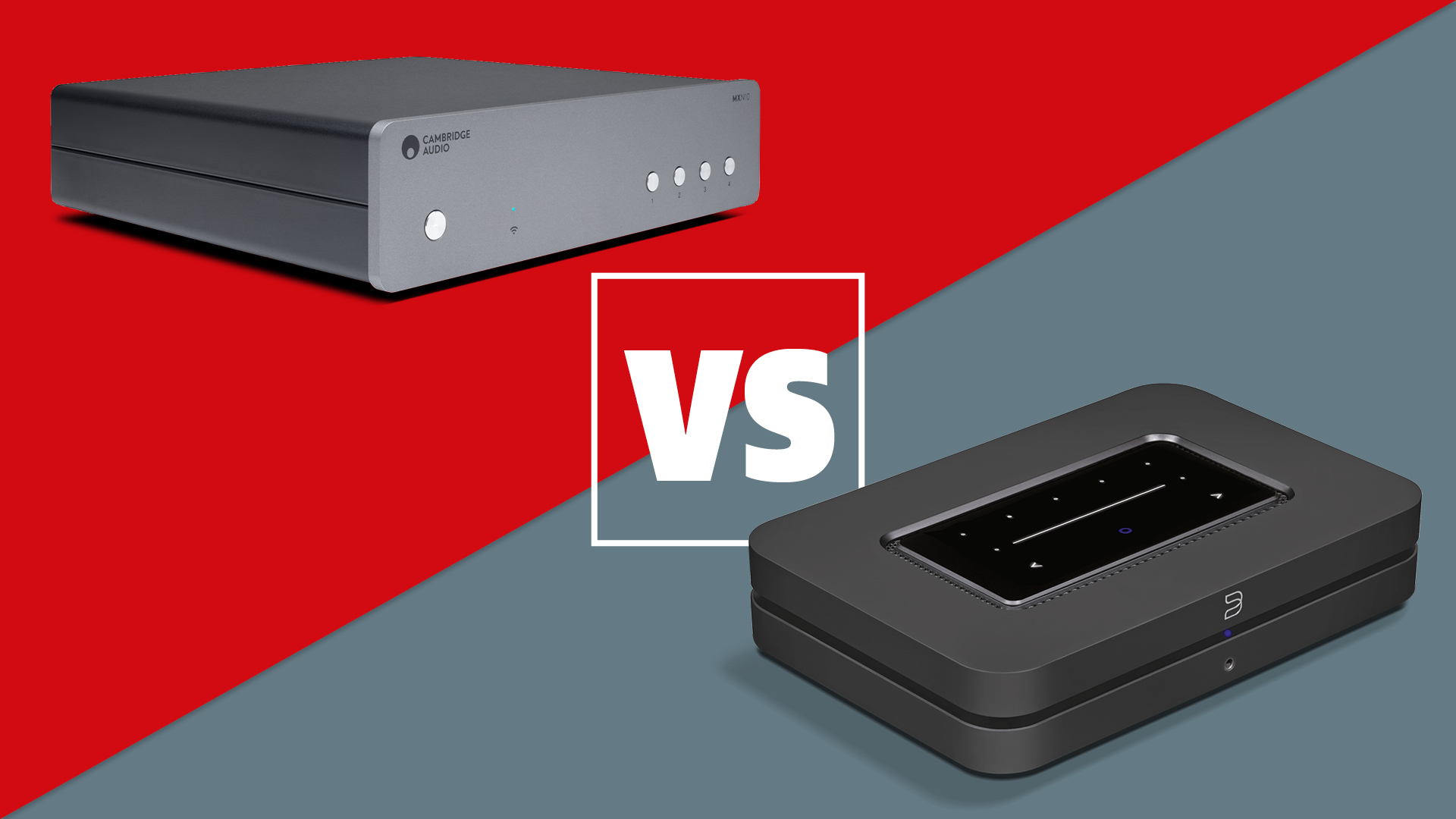
Inputs Mini TOSLINK/3.5mm Stereo combo, HDMI eARC
Outputs RCA, coaxial, optical, subwoofer, 3.5mm
Max file resolution 24-bit/192 kHz, MQA Master
Dimensions (hwd) 22 x 4.6 x 14.6cm
Weight 1.1kg
Finishes 2 (Black, White)
The excellent Bluesound Node (2021) has won many fans thanks to its exciting, energetic sound presentation and strong feature list.
For
- Infectious sense of rhythm
- Dynamically expressive
- Generous wireless and wired connectivity
Against
- No DSD support
- Facing increasing competition at this price
Inputs N/A
Outputs Coaxial, optical, RCA line level
Max file resolution 32-bit/768kHz PCM, DSD512
Dimensions (hwd) 5.2 x 21.5 x 19.1cm
Weight 1.2kg
Finishes 1 (Lunar Grey)
A versatile, elegant and well-rounded unit that shows very few weaknesses, the MXN10 is a consummate pro.
For
- Brilliant all-round sonic performance
- Fantastically affordable price
- Great streaming features and file compatibility
Against
- Somewhat basic physical controls
- No MQA support via Tidal
Music streamers, or network audio players as they're also called, are ideal for anyone who wants to improve their digital music and streaming set-up’s capabilities from one talented box. They offer wireless playback to your hi-fi, with a bucketload of streaming methods and supported music apps thrown in, bringing the convenience of music streaming into your set-up without sacrificing audio fidelity.
The Bluesound Node (2021) and Cambridge Audio MXN10 are two affordable music streamers designed to offer value for money to consumers who want to add network streaming to their hi-fi. They may be at the budget end of the market, but that doesn't mean they've skimped on features: these streamers have a plethora of playback options – both when it comes to streaming services and physical connections – plus support for a wide variety of hi-res file formats.
This particular match-up is a fascinating one. The Bluesound Node (2021) is the current What Hi-Fi? Award-winner in the best budget music streamer category and has been delivering admirably capable sound without a high price tag. There hasn't been any rival that's bettered its combination of price, features and performance since its arrival two years ago.
Not until now, that is. A serious contender has just arrived on the scene in the form of the five-star Cambridge Audio MXN10, which will really have the Node sweating with our Awards season just around the corner. If the new boy claims a win, we could see a genuine changing of the guard within the budget music streamer category.
Bluesound Node vs Cambridge Audio MXN10: price
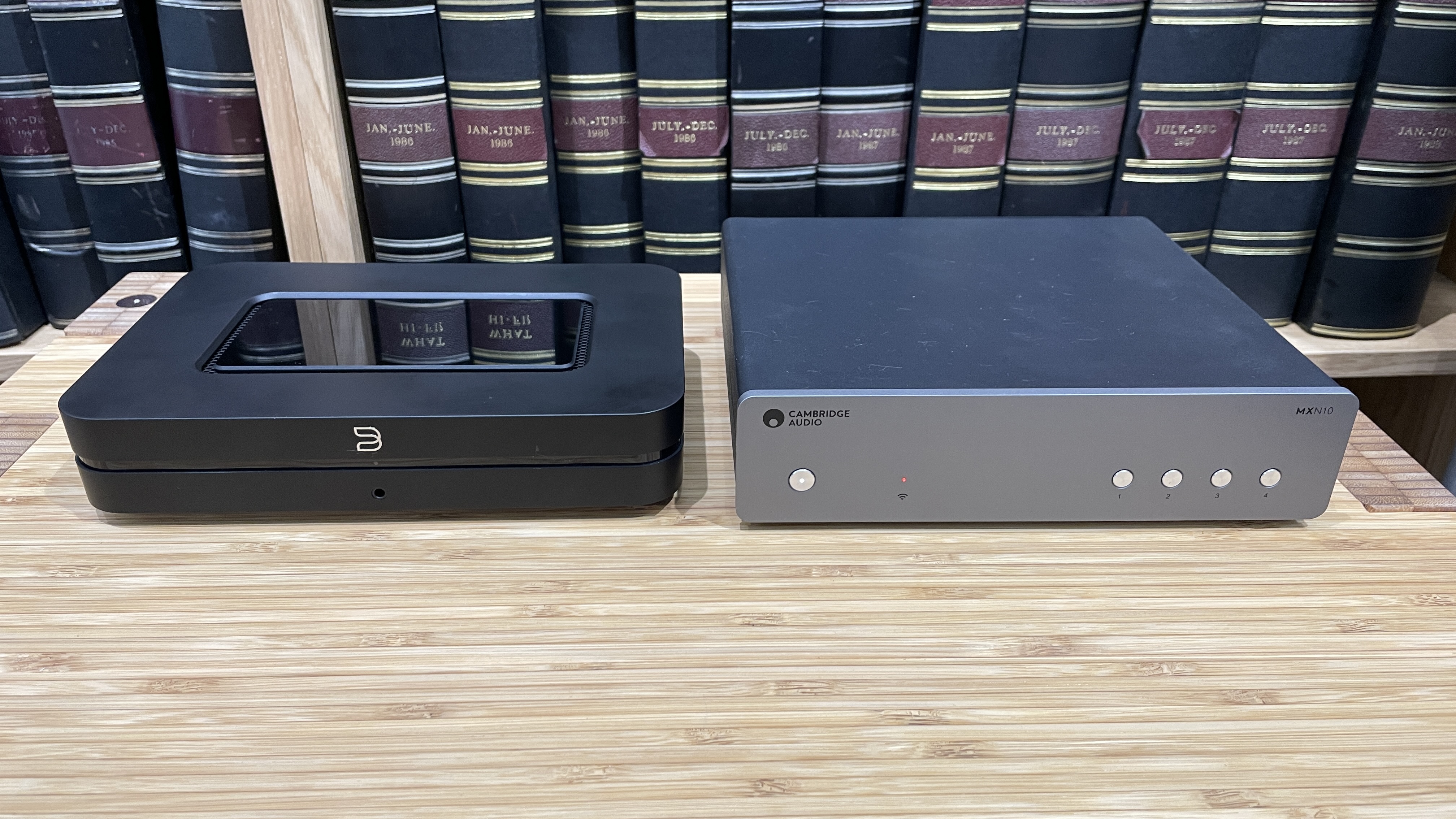
The MXN10 and the Bluesound Node are at a similar end of the music streamer price spectrum, with the MXN10 setting you back £449 / $499 / AU$899 compared to the Node's £549 / $549 / AU$999 asking price.
Listen to either model, however, and you'll be impressed with how both sound far more premium than their respective price tags would indicate. These are what we'd term "affordable" music streamers, yet both really give you so much bang for your buck in terms of sound, features and even build quality.
In truth, then, both models represent five-star value for money, so neither will leave you dissatisfied or wishing you'd paid a heftier sum. The MXN10 takes the win here, though, undercutting the Node by £100 / $50 / AU$100 and representing superb value at this end of the market.
**Winner: Cambridge Audio MXN10 **
Bluesound Node vs Cambridge Audio MXN10: build & design
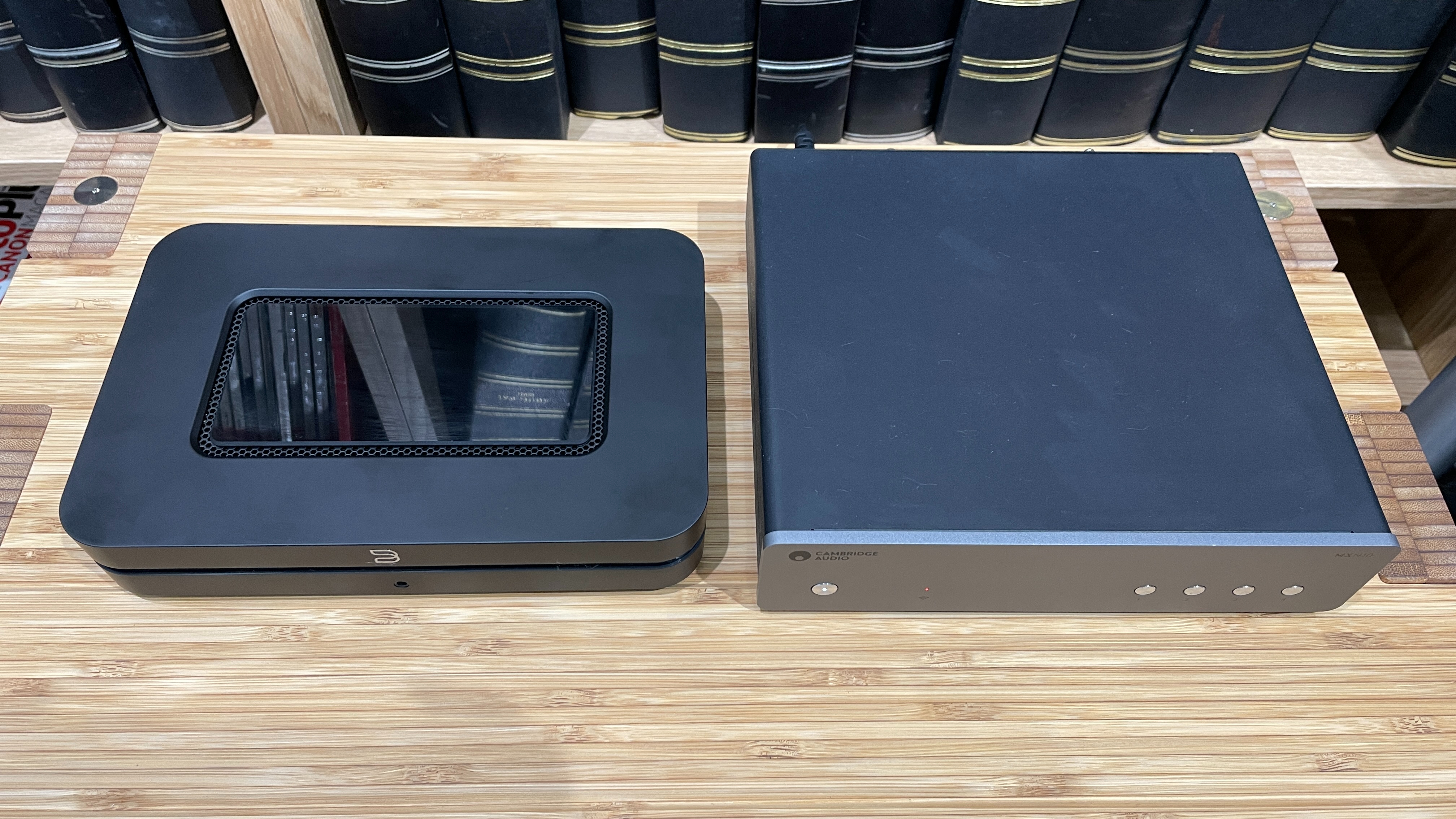
Both competitors are somewhat on the tiddly side, making this more a lightweight scrap than a heavyweight rumble. Compared with the full-size units we see from most other audio brands (Cambridge has its own full-sized option, the AXN10, too), the dinky sizes of these two units will no doubt be welcome for anyone tight on space.
The Bluesound Node is a likeable little unit, looking comparable to a high-end wireless router thanks to its sleek black design, pleasing LEDs and touch-capacitive top panel.
That touch panel, by the way, lets you change the volume with a swiping action, as well as skip tracks or initiate one of five pre-allocated presets by tapping small dots and arrow symbols. Much as we enjoy using the Node, we did wish at the time that it was fitted out with a proper screen display, although there is a BluOS app provided to handle most controls.
The sleek MXN10 has much in common with the Node. It isn't a big or bulky object either, and if anything it feels lighter and less dense than the touch-sensitive Node. There's not much at the front at all, and all you get to play with is a power button, four presets and a wi-fi LED indicator. No display, no fancy hand swipes, just a pleasing metallic chassis, five buttons, and that's your lot. Not even a remote control is provided, meaning you'll be relying on the admittedly solid StreamMagic app instead.
The MXN10 is a neat and satisfactory effort, but we'll give the point to the Bluesound Node in this particular field for its more compact form and extra flourishes.
**Winner: Bluesound Node**
Bluesound Node vs Cambridge Audio MXN10: features
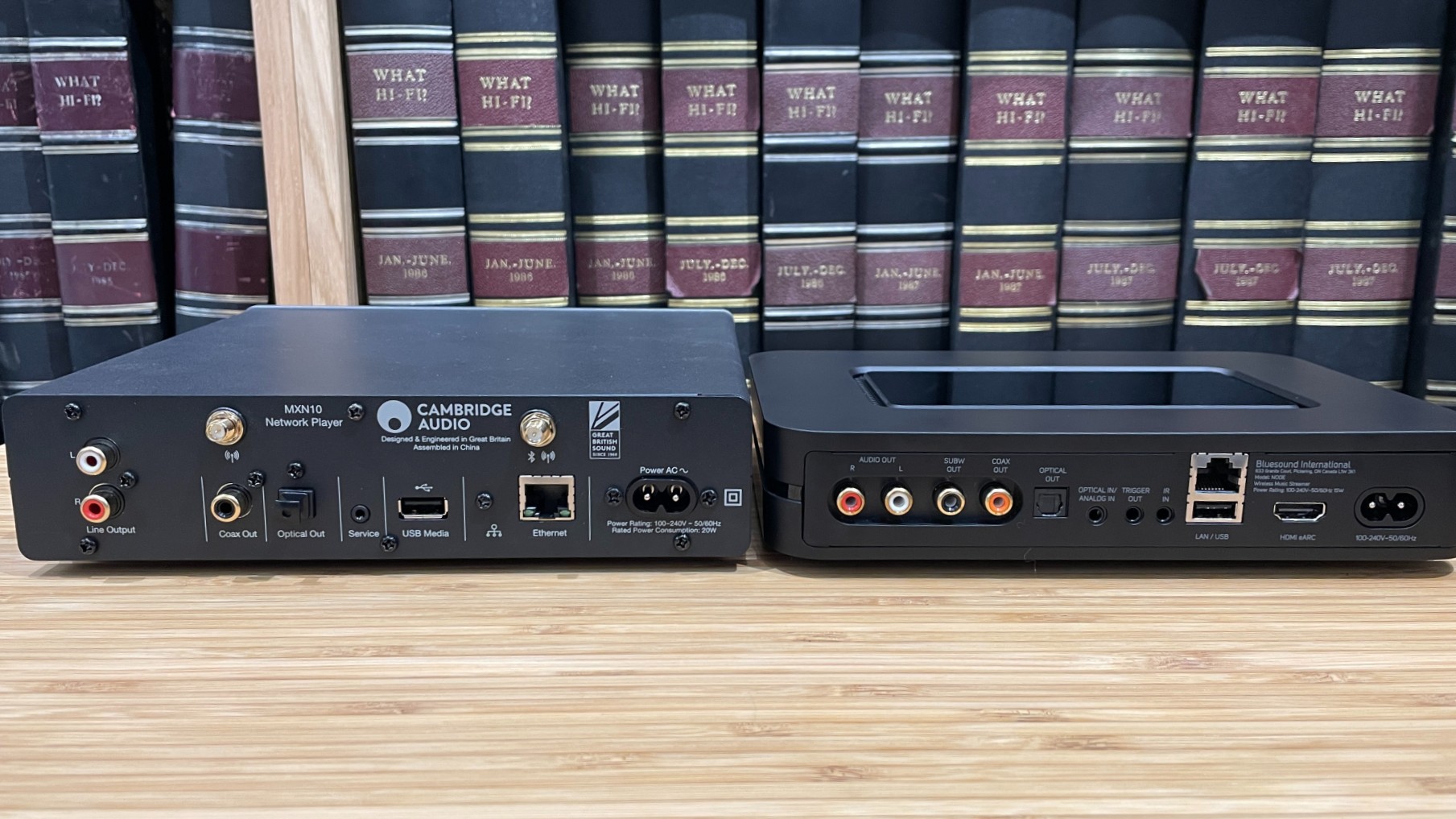
Everything on the Bluesound goes through the app-controlled BluOS platform, although you can get an optional RC1 remote for a pretty hefty £49 / $59 / AU$99. What you do get, though, is Apple AirPlay 2 support and two-way aptX HD Bluetooth, meaning you can receive Bluetooth files and send what's playing to compatible headphones and speakers. Through the app, you also get access to a whole bunch of music app and radio stations, from Amazon Music to Tidal and everything in between. Further, BlueVoice lets you use Alexa or Google Assistant if you don't fancy pushing physical or digital buttons.
For physical connections, there's a mini optical/3.5mm combo and HDMI eARC inputs for connecting audio sources or a TV, plus a range of outputs that includes RCA, coaxial, optical and subwoofer. Additionally, a 3.5mm headphone jack can be found in the middle of the front panel if you want to plug the Node directly into your ears.
Digital connections are given life by a powerful internal DAC that supports hi-res audio up to 24-bit/192kHz and MQA files, which is good news for anyone with a Tidal Hi-Fi tier account. There are more powerful processors internally than previous Bluesound products, too, making a decent showing all around for the impressive Node.
Can the MXN10 keep up? It starts strong, hosting an array of streaming methods including Google Chromecast, Bluetooth 5.0 and AirPlay 2, as well as apps such as Spotify Connect, Tidal, Deezer and Qobuz, and internet radio. Like the Bluesound, there's an ethernet port if you’re planning on plugging the unit directly into your router as opposed to relying on your wi-fi connection (as is recommended).
The StreamMagic streaming module and app are the MXN10's answer to BluOS, granting access to all apps and streaming methods so you can control your music playback straight from your smartphone or tablet. The app is solid, remaining more stable, user-friendly and more responsive than many rival control apps (DTS Play-Fi, we're looking at you).
Best of all, the MXN10 comes equipped with the ESS Sabre ES9033Q DAC, letting it stream high-resolution files up to 32-bit/768kHz PCM and in DSD512 resolution. We were frustrated by a lack of native MQA support for Tidal Masters hi-res streams during the review, but that's a minor quibble, especially with Tidal offering FLAC hi-res streams imminently.
Regarding physical connections, the MXN10 is fitted simply with an RCA line-level analogue output, plus one coaxial and optical apiece on the digital side. There's no headphone jack or HDMI port as there is on the Node. It’s not exactly a party around the back, but overall there’s enough here to just about keep up with the Node.
**Winner: Draw**
Bluesound Node vs Cambridge Audio MXN10: sound quality
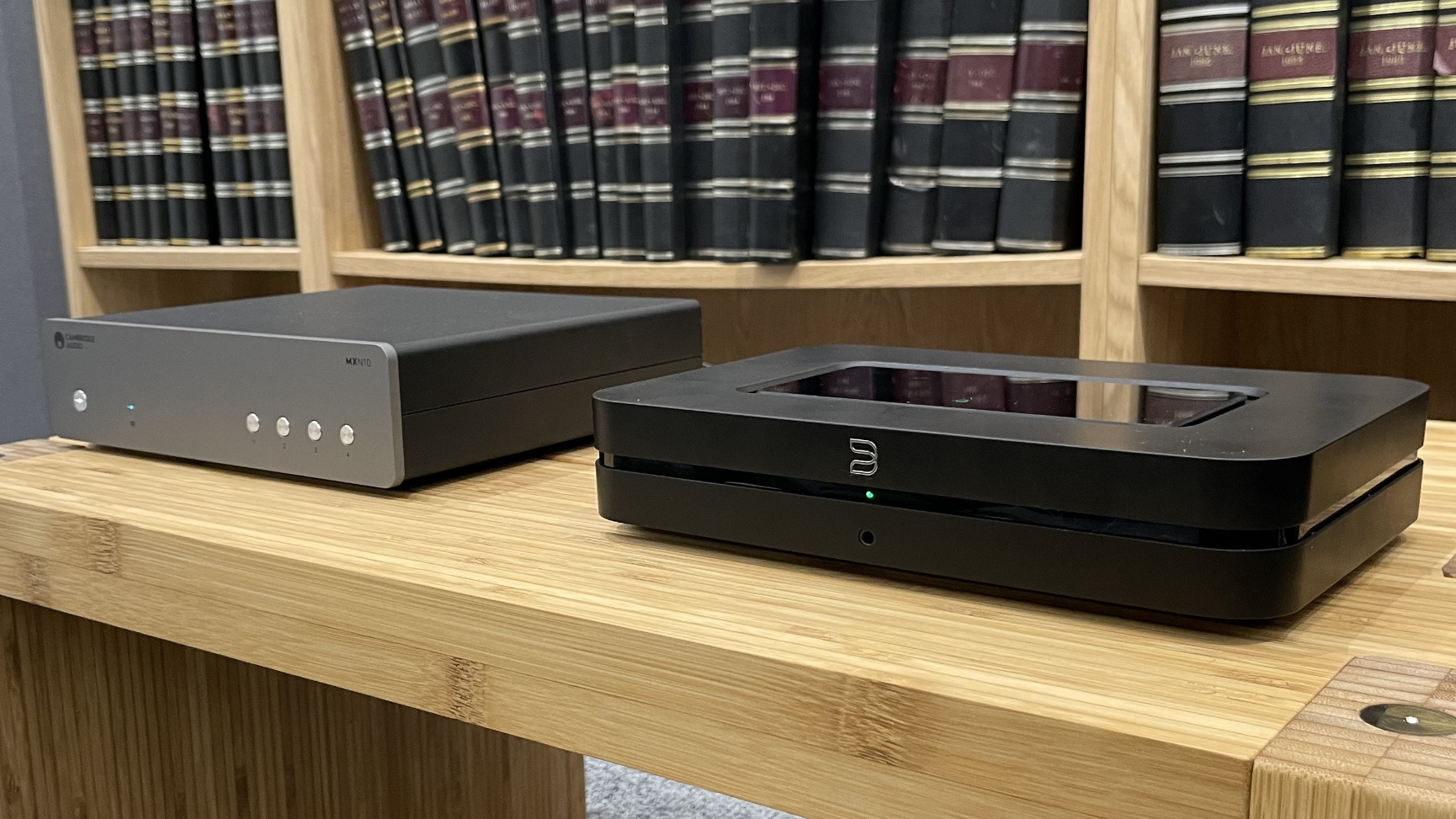
The Bluesound Node has essentially set the sonic standard at this level, so how does the MXN10 shape up?
Let's start with the Node (2021) and its rhythmic, dynamic and peppy character that made it a multiple What Hi-Fi? Award winner. Bluesound's budget streamer already had a reputation for what we termed an "entertaining sonic character" since the model's inception several years ago, but it was the 2021 iteration that brought in more refinement and detail than before. The Node is a fun, punchy listen – always willing to put entertainment and character first but never so much that the music becomes overly coloured or distorted as a result.
It fleshes tones out properly, too. Even with something as subtle and refined as composer Ludovico Einaudi's Seven Days Walking / Day 1 – Golden Butterfly, the Node brings out more timbre, texture and warmth to those piano sounds. That's an impressive feat for what you might be thinking is just a one-trick pony. Perish the thought.
If listening to the Node was fun for us, switching to the MXN10 was a real treat. During comparative testing, we were bowled over by how the new boy seemed to take everything in its stride, offering an extra ounce of space, breadth and clarity without sacrificing dynamism or flair. That balance between entertaining and informing is a hard one to strike, but the MXN10 nails it better than any other budget streamer we've heard. Whatever we put it up against, the Cambridge remained composed whenever the music became demanding, rendering the tone and texture of instruments in a truly convincing way.
In fact, the more we listened, the more the MXN10 revealed its myriad strengths, providing Wu-Tang Clan’s Gravel Pit with bounce and heft before wowing us with a powerful yet clean and organised rendition of Deftones’ Swerve City. Listening to the MXN10 was a real pleasure, and one we wanted to keep going indefinitely.
As you might've guessed, the MXN10 has set a new bar in this realm. We still love the Node and have no problem recommending it, but the MXN10's performance was consummate. We have to go with the young pretender here for pure musical enjoyment.
**Winner: Cambridge Audio MXN10 **
Bluesound Node vs Cambridge Audio MXN10: verdict
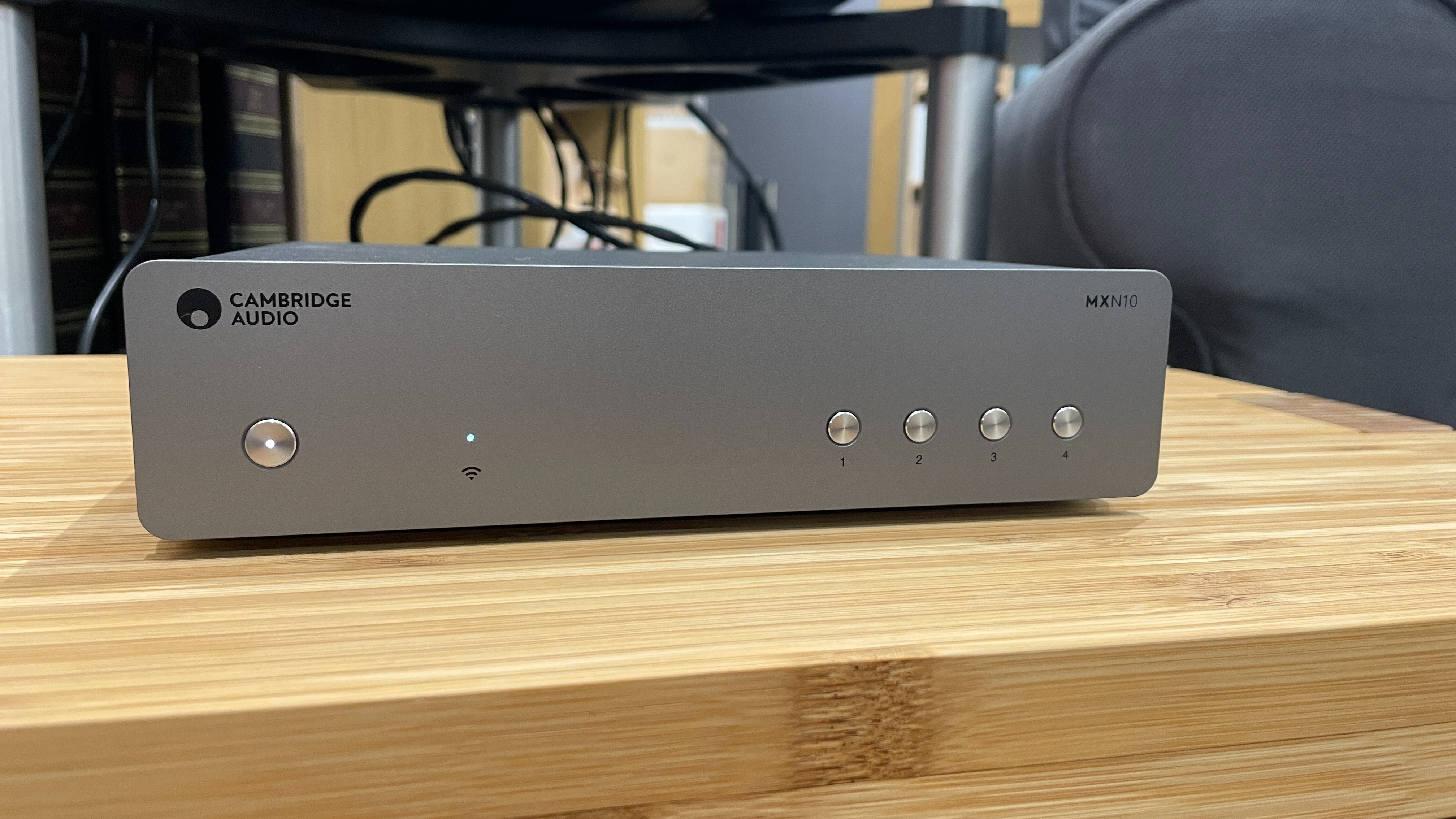
Both of these budget network streamers are five-star performers, so make no mistake that you're dealing with two excellent operators at an end of the market where it is hard to impress. With little wiggle room in terms of price and a lot of demands to perform sonically, both deliver a masterclass in offering as much musical bang for your buck as possible.
We like the Node immensely and would have no issue recommending it for its flexible connection options, better on-unit controls and strong file compatibility. What the MXN10 offers, conversely, is an equally compelling suite of streaming smarts with a sonic performance that really hits that sweet spot between dynamics, spaciousness and detail. Also, at £449 / $499 / AU$899, that clear saving over the Node could well be enough to tip the scales in the Cambridge Audio's favour for most people.
MORE:
Read our full review of the Cambridge Audio MXN10
And our Bluesound Node (2021) review
Best music streamers: upgrade to a wireless system







